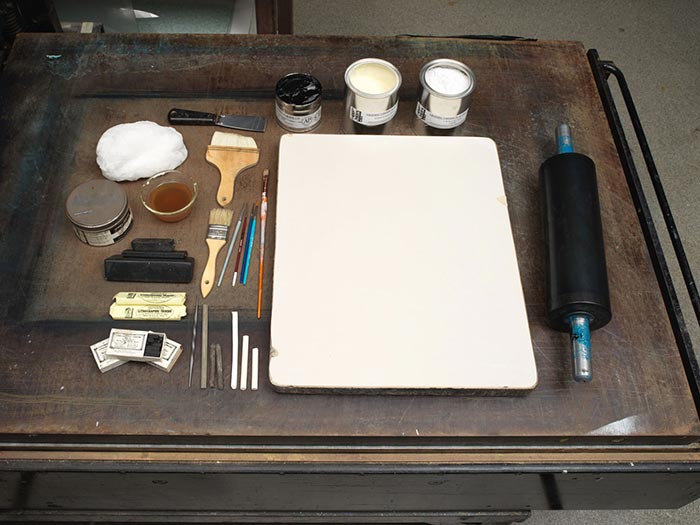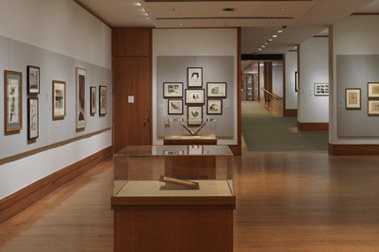Sure of a Bite: "Golly! Dis am a high old picnic!"
Thomas B. Worth American
Publisher Currier & Ives American
Not on view
The late nineteenth-century Darktown prints by Currier & Ives depict racist stereotypes that are offensive and disturbing. The Metropolitan Museum of Art preserves such works to shed light on their historical context and to enable the study and evaluation of racism.
In this print, two men sit in a flat-bottomed boat (shown in a side view) in a swamp. At right (at the front of the boat), a white man (shown in profile which accentuates his pointed beard) holds a fishing pole; he stares with concentration through his monocle at his fishing line. Dapperly dressed, he wears a brimmed straw hat, a light blue vest over a striped shirt, pink/gray striped pants, and boots. Seated at the back of the boat, a plump, caricatured Black (African American)-- wearing a straw hat, a red shirt and blue pants --drinks from a bottle and holds some bread in his right hand, while supporting a picnic basket between his knees. He is unaware that a open-mouthed crocodile is behind him poised to bite his backside. Lush vegetation comprises the background; a tall tree is at the right of the image. In the lower center foreground, a turtle sits on a partially submerged log. The title and the caption (a comment made by the Black man) is imprinted in the bottom margin. This is a companion print to "Bustin' a Picnic" (Peters 150, Gale 0840; Metropolitan Museum of Art accession no. 52.632.247).
Nathaniel Currier, whose successful New York-based lithography firm began in 1835, produced thousands of prints in various sizes that together create a vivid panorama of mid-to-late nineteenth century American life and its history. People eagerly acquired such lithographs featuring picturesque scenery, rural and city views, ships, railroads, portraits, hunting and fishing scenes, domestic life and numerous other subjects, as an inexpensive way to decorate their homes or business establishments. As the firm expanded, Nathaniel included his younger brother Charles in the business. In 1857, James Merritt Ives (the firm's accountant since 1852 and Charles's brother-in-law) was made a business partner; subsequently renamed Currier & Ives, the firm continued until 1907.

